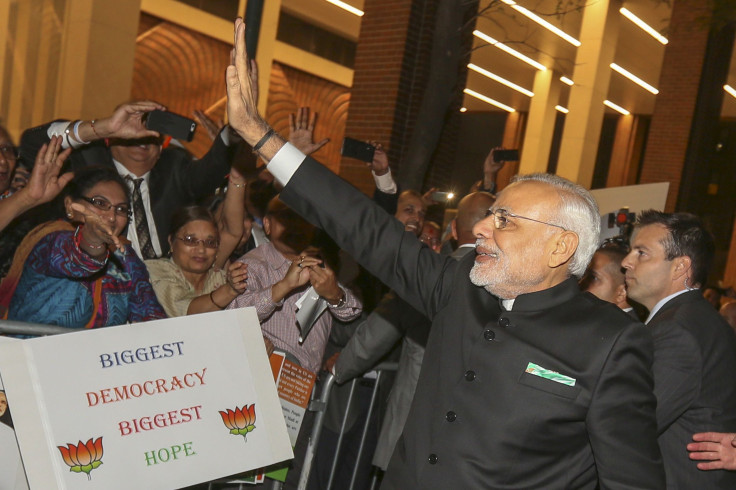Google CEO Sundar Pichai Says 'Passionate' About Role In Digital India, Welcomes India PM Modi To Silicon Valley

Google Inc. CEO Sundar Pichai has welcomed India's Prime Minister Narendra Modi to Silicon Valley. Modi arrived in the U.S. Wednesday for a five-day official visit, which includes a West Coast itinerary. The last time an Indian prime minister visited California was in 1949.
Modi's U.S. itinerary includes a public speech at San Jose's SAP Center, a town hall at Facebook Inc.'s headquarters with CEO Mark Zuckerberg, and a visit to Google's campus.
"It's an honor to be welcoming PM Modi to Silicon Valley this coming weekend," Pichai said in a YouTube video posted Wednesday. "There's tremendous excitement for your visit amongst all Googlers and the entire Indian community."
Modi is in the U.S. to drum up support for his vision of India that includes boosting local manufacturing, via a campaign he has termed "Make in India," as well as bringing broadband Internet and the Web services that can ride on it to more than 250,000 villages spanning the subcontinent -- an umbrella effort that has become popular as "Digital India."
"India has long been an exporter of talent to tech companies ... But it is India that's now undergoing its own revolution," Pichai said. Modi's digital India vision, which focuses on connecting the country's 1.2 billion people, "is central to this revolution," he added.
"We at Google as well as many others around the world are passionate about playing our part. There is no more important role for tech companies today than helping to connect the next billion Internet users," Pichai said.
Google estimates that in the coming few years, 50 million women and 20 million small businesses will come online for the first time. In this context, the digital India effort will benefit many, especially girls, people in villages and those who can only speak their own local languages. Google is working on making its products work on low bandwidth and even offline, Pichai said.
More than 70 percent of India's nearly 1 billion wireless subscribers still only tap 2G technology, a Google executive said recently, at a Google For Mobile conference in Bangalore, for software developers. Products, such as YouTube, which work offline are hugely popular in India as mobile network-based connectivity is still unreliable in many parts.
© Copyright IBTimes 2025. All rights reserved.



















